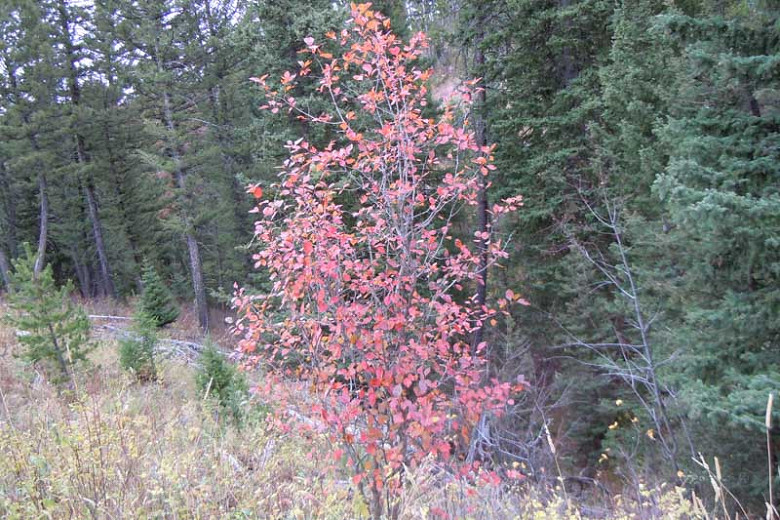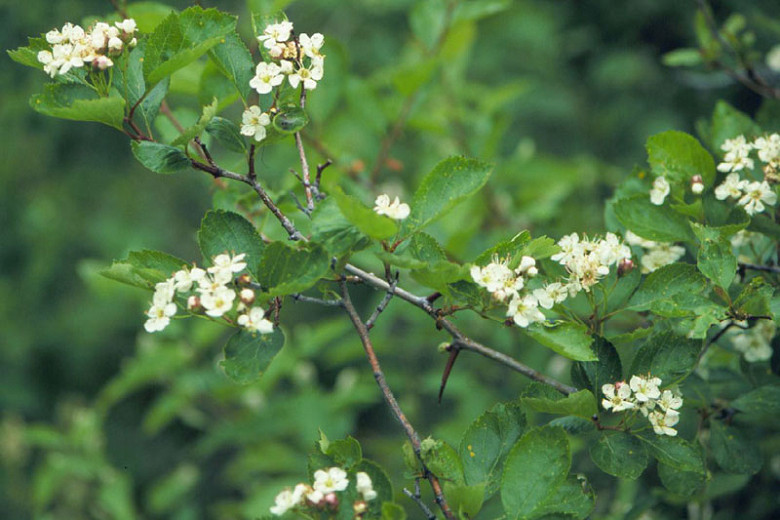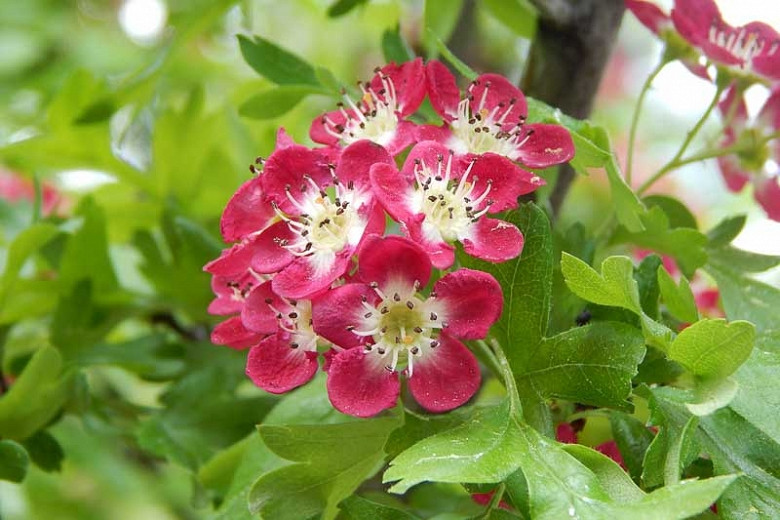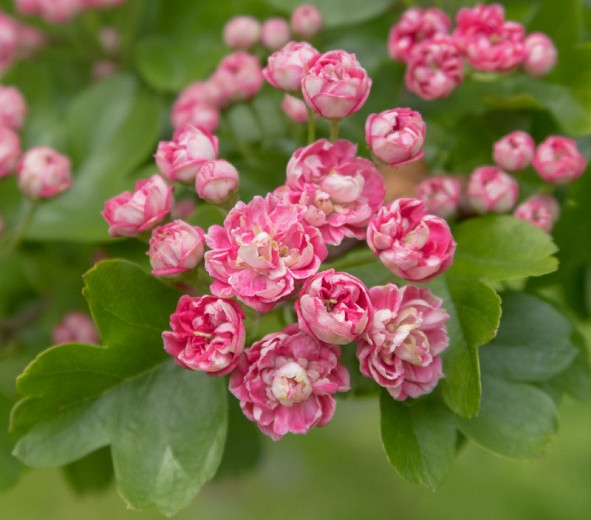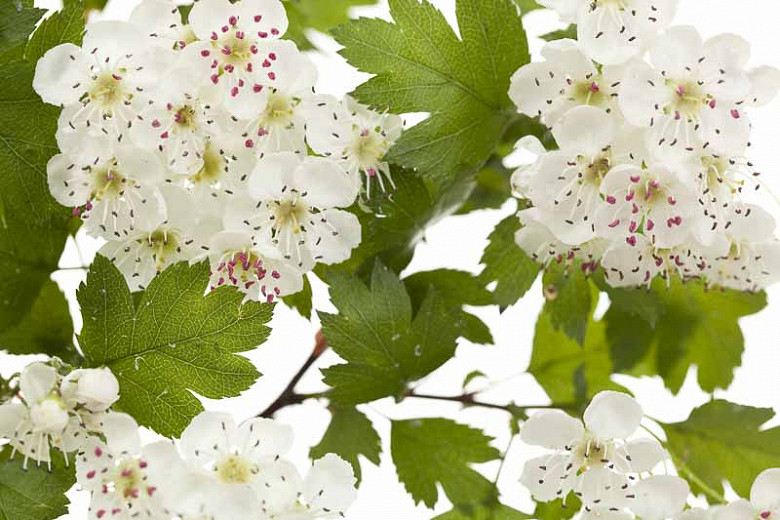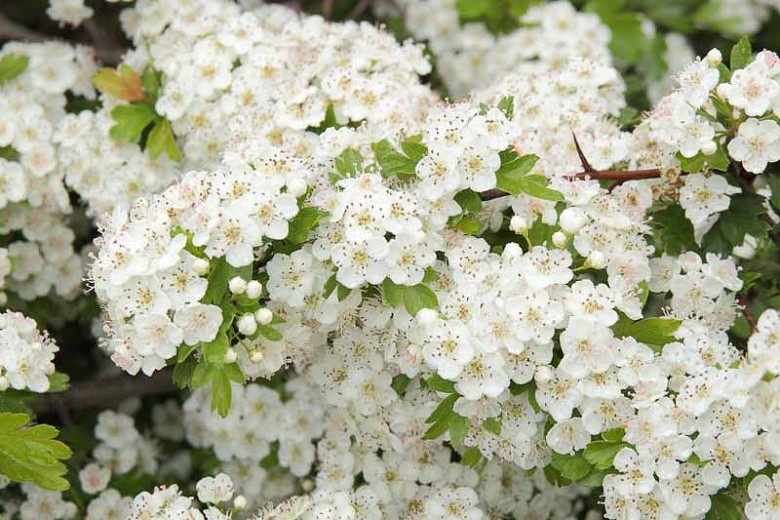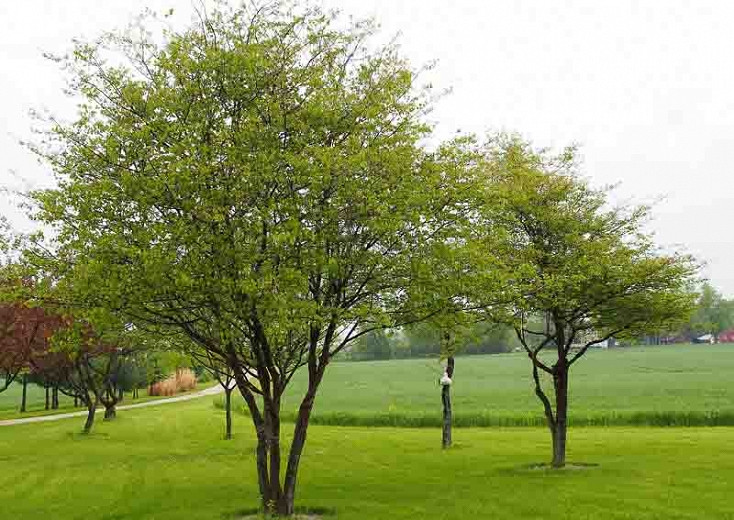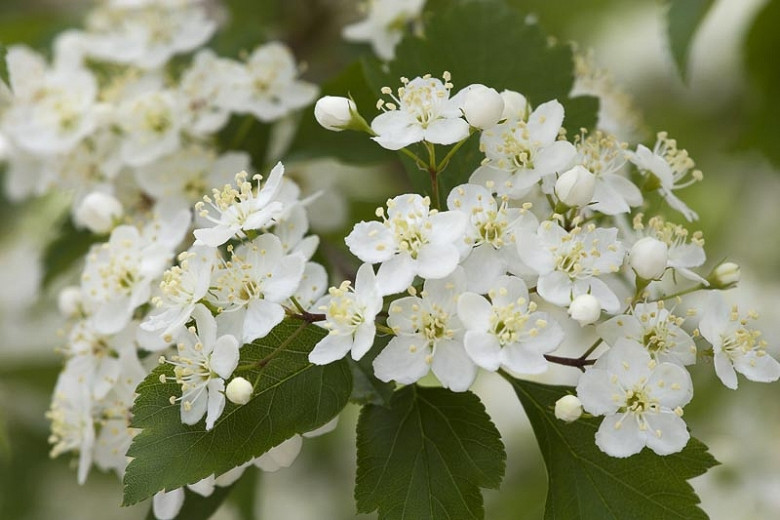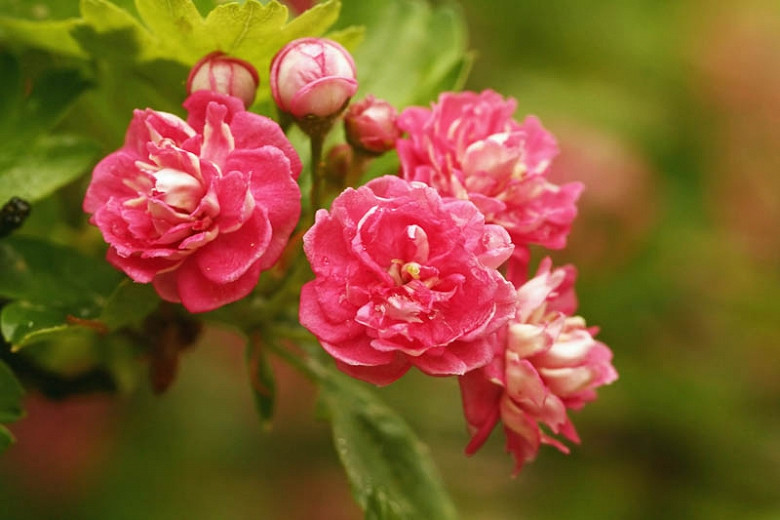Crataegus douglasii (Black Hawthorn)
Crataegus douglasii (Black Hawthorn) is a large shrub or small deciduous tree with a long trunk and a compact, round-topped crown of stout, spreading branches armed with 1 in. long thorns (2.5 cm). They are clothed with shiny, leathery, oval, toothed leaves, 3-5 in. long (7-12 cm). In late spring to early summer, a profusion of unpleasantly scented, white flowers held in flat-topped clusters (corymbs) provide a spectacular spring floral display. The flowers attract butterflies, moths, and other pollinators. They are followed by edible, deep red fruits which ripen to black in late summer. The berries may persist on the tree and remain attractive for a long time. The foliage may turn attractive shades of red, orange, and yellow in fall, before shedding to the ground. Black Hawthorn is a handsome ornamental with its showy white flowers, glossy foliage, and shiny black fruits. Fire tolerant, it is an excellent soil and streambank stabilizer. Its brushy growth form makes it a desirable species for hedges and barriers.
- Grows up to 10-25 ft. tall and wide (3-8 m). Will sprout and sucker to form small, dense, impenetrable thickets.
- A full sun lover, this tree is easily grown in moist to wet soils. Tolerates part shade but best fruit production occurs in full sun.
- Perfect as a specimen tree for lawns or streets, native plant gardens, or for erosion control.
- Requires only minimal pruning in late winter or early spring, to remove damaged, diseased, or misplaced growth.
- Keep an eye out for cedar-hawthorn rust, cedar-quince rust, fireblight, fungal leaf spots, powdery mildew, cankers, apple scab, borers, caterpillars, lacebugs, leafminers, and scale.
- Propagate by seed. 6-8 weeks of moist chilling improves germination of stored seed. Scarification may also be necessary.
- Native to western North America.
Requirements
| Hardiness | 3 – 9 |
|---|---|
| Climate Zones | 1, 2, 4, 5, 6, 7, 10, 14, 15, 16, 17, 18 |
| Plant Type | Trees |
| Plant Family | Crataegus – Hawthorns |
| Exposure | Full Sun |
| Season of Interest | Spring (Late)Summer (Early)FallWinter |
| Height | 10' – 25' (3m – 7.5m) |
| Spread | 10' – 25' (3m – 7.5m) |
| Water Needs | Average, High |
| Maintenance | Average |
| Soil Type | Chalk, Clay, Loam, Sand |
| Soil pH | Acid, Alkaline, Neutral |
| Soil Drainage | Moist but Well-Drained, Moisture Retentive |
| Characteristics | Fragrant, Showy, Fruit & Berries |
| Native Plants | United States, Alaska, California, Midwest, Michigan, Minnesota, North Dakota, South Dakota, Wisconsin, Pacific Northwest, Idaho, Oregon, Washington, Rocky Mountains, Montana, Utah, Wyoming, Southwest, Nevada |
| Tolerance | Drought |
| Attracts | Birds, Butterflies |
| Garden Uses | Hedges and Screens |
| Garden Styles | Informal and Cottage, Prairie and Meadow |
